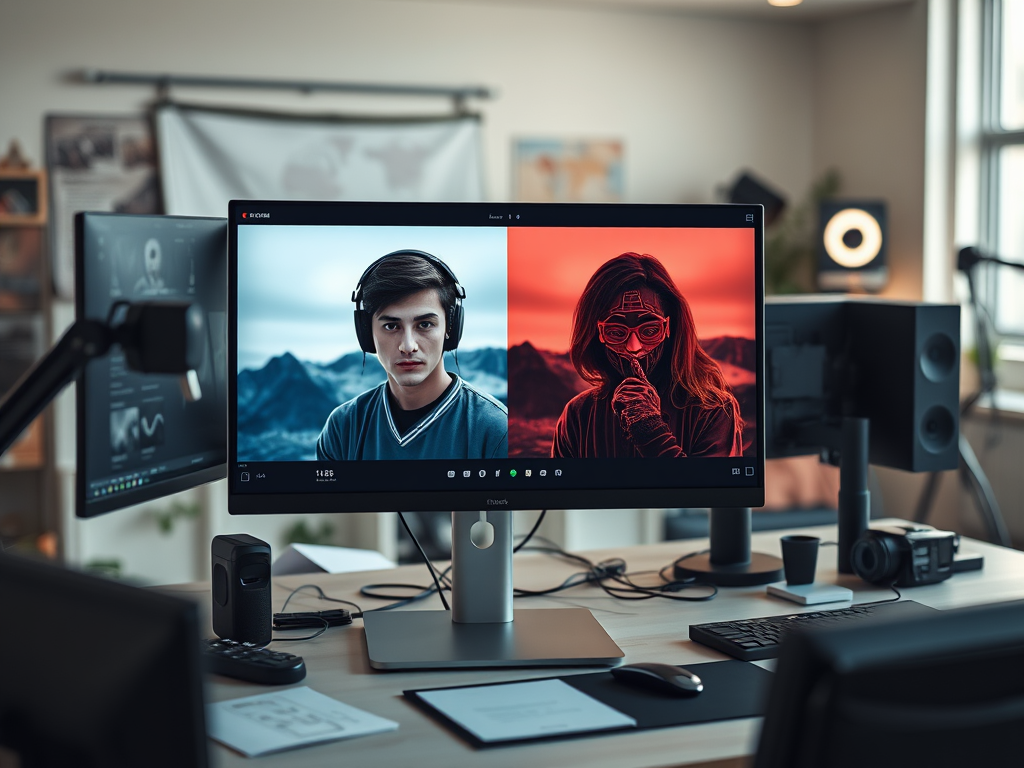In this modern age, technology continues to advance towards a more efficient future with AI changing the methods used for image modification. The development of Deepnude and sophisticated neural networks has empowered the everyday man and businesses by making it easier than ever to enhance and modify images. The power of creating any image from the void has far reaching consequences that must be closely analyzed to address the ethical concerns attached to it. Where do we draw the line between exercising ethical boundaries and creative freedom? This article discusses the dimensions AI-powered image modification encompasses, focusing on the guiding morals and practices that aim to resolve the dilemmas of this rapidly growing field.
By enabling users to create something that doesn’t even exist in reality, AI continues to grow in prowess at an extraordinary rate. The resources provided to an individual are endless, however, possessing the ability to alter the image can have harmful consequences if done unchecked. In this analysis, we will outline crucial ethical pointers that need to be considered as society continues to grow adapting AI to their day-to-day lives while also ensuring we do not lose sight of what visual storytelling leads to amidst the advancement of technology.
Understanding AI Techniques in Image Modification

Understanding ethics encompasses an understanding of AI and image alteration. AI utilizes strategies like machine learning and deep learning for image examination and editing. As an illustration, neural networks play a crucial role in photograph augmentation, as well as, producing striking visual alterations. Knowledge of how this AI works raises questions about what’s possible and what’s dangerous, A growing number of people is using AI, which brings to life concerns about the unreasonable artistic value of AI changes alongside value-laden issues concerning ethics.
- Deep Learning: Enables dramatic enhancements through layered neural networks, optimizing image quality and resolution.
- Generative Adversarial Networks (GANs): A pioneering technology that creates hyper-realistic images by pitting two algorithms against each other.
- Style Transfer: A method that allows AI to filter photos through various artistic styles, resulting in impressive reinterpretations of original works.
These technologies demonstrate not just how AI can alter images but the accompanying challenges as well. With increasing reliance on these tools, the need for ethical concerns is even more crucial. The boundary between expression and falsehood continues to shrink which forces parties to examine their duties with greater care.
Ethical Issues in AI Image Modification

Along with the increasing possibilities in the modification of an image comes an exponential rise in ethical dilemmas. An overriding illustration is misinterpretation and disinformation. The image modification capability calls for an examination of reality’s integrity including the manipulation of a depiction to present a fake story. When fighting disinformation, holders of ethical standards must plead for trust and credibility in the every process of image creation and distribution.
- Manipulation of Reality: The capacity to create misleading images poses a profound threat to societal trust.
- Public Trust: Continuous exposure to altered images erodes audiences’ belief in media and artistic representation.
- Legal Repercussions: Falsely attributed imagery can lead to legal consequences for individuals and organizations, especially in sensitive contexts.
An additional problem that has emerged is privacy. Changes made with the use of AI technology usually include the photographs of people for whom the consent has not been solicited, thus breaching the privacy of their personal space. Images of a person’s face and body are considered their personal property which a large number of people agree should be protected, but the debate about whether legal systems should be constructed for diverse different privacy norms is still going on. Moreover, possessing rights over material produced by artificial intelligence is still being debated, which shows clearly how far behind the pace of technological advancement laws and regulations are.
| AI Techniques | Primary Use | Ethical Considerations |
|---|---|---|
| Deep Learning | Image enhancement and restoration | Risk of altering reality |
| GANs | Creating realistic images | Potential for deceptive content |
| Style Transfer | Emulating artistic styles | Questions of originality and copyright |
The Role of Transparency in AI Image Modification
Trust is paramount in a media driven society and for that reason, clear explanation to the use of AI technology in modification of images is of utmost importance. This means telling an audience not only that images have been changed, but also how much they have been changed. Establishing a system of accountability enables a minimal level of expectation for the responsible use of professional ethics by the creators and organizations.
- Disclosure: Clearly notify viewers when presenting AI-modified content.
- Accountability: Establish guidelines that ensure accountability for creators and stakeholders.
- Education: Encourage learning and awareness around AI technologies and their implications.
Conclusion
To summarize, the ethical implications of AI technology regarding image alteration is certainly intricate and has multiple views. Technology growing more advanced blurs the lines of what ethical practices need to be employed respecting human beings and the society as a whole. The discussion on authenticity, privacy, and ownership is equally important to the future of image manipulation. With the right checks and balances, the dangers that AI poses can be mitigated while using its power to further enhance visual communication.
Frequently Asked Questions
- What are the main ethical concerns regarding AI in image modification?
The main concerns include misrepresentation, privacy violations, and the lack of consent. - How does AI image modification affect trust in media?
Altered images can lead to skepticism and distrust among audiences, particularly if they are misrepresented. - Is consent necessary for modifying images of individuals?
Yes, ethical standards dictate that individuals should provide consent before their images are altered and published. - What steps can be taken to ensure ethical AI image modification?
Practicing transparency, disclosing AI use, and establishing accountability are key steps to ethical practices.


